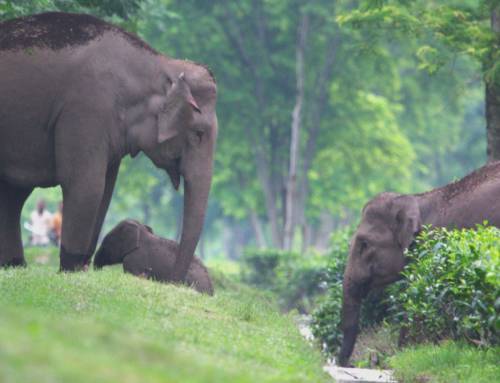Research Article: DeFries, R., Karanth, K., Pareeth, S., (2010). Interactions between protected areas and their surroundings in human-dominated tropical landscapes.
Blog Author: Simran Prasad
Key Highlights:
- Scientists propose the ‘zone of interaction’, which delimits interactions that parks share with the adjacent human-dominated landscape
- Land-use planning and monitoring efforts are required to preserve ecological and socioeconomic function in the zone of interaction
- Striking a balance between livelihood opportunities and conservation goals is imperative to the success of land-use planning programs
Wildlife reserves and parks are established geographical spaces that focus on the long-term conservation of nature. Parks also facilitate essential services such as the flow of water and nutrients, leading to interactions with the surrounding landscape. Parks are often surrounded by many human settlements in the area. The people residing in these areas are dependent on resources within the landscape. However, park boundaries cannot functionally accommodate the circulation of resources across the landscape. To identify large-scale interactions between parks and the surrounding landscape, the ‘zone of interaction’ (ZOI) can be used. The ZOI delimits the interactions that parks share with the surrounding landscape. Interactions include the flow of water, nutrients, organisms, ecosystem services and socioeconomic processes.
Scientists from the Centre for Wildlife Studies, Columbia University and the ATREE used topographical features, land cover and habitat suitability to delimit the ZOI. Data from the 2001 Indian census were used to gather population density data of people living near PAs. The locations of surrounding villages, tourist retreats and homestays were identified, along with the distance travelled by people to access forest resources was analysed using literature values. The study assessed three parks in India: Kanha, Nagarhole and Ranthambore. These parks differ in areas, socioeconomic, and ecological characteristics.

Distinctive human settlement within a forested Indian landscape.
The authors identified that the total ZOI differed across the three parks. In Kanha, the ZOI was approximately four times the area of the park due to the adjacent surrounding forest. The ZOI was seven times the area of the park in Nagarhole, as elephant corridors and upstream watershed were included. In Ranthambore, the ZOI was thrice the area of the park, because of interactions shared with neighbouring villages. The authors propose the ZOI as a primary measure to identify the extent of socioeconomic and ecological functioning within the PAs and the surrounding landscape.
The study highlights the myriad interactions around parks that affect land use in the area, thereby impacting the ecosystem. Communities living in and around these parks are often dependent on forest resources for their sustenance. Maintaining a balance between conservation goals and the needs of ecosystem-dependent people is crucial to paving the way for land-use decisions in the future. Authors highlighted that the ZOI represents a faceted solution that accounts for this balance in human-dominated landscapes.
You can access the original article here.




